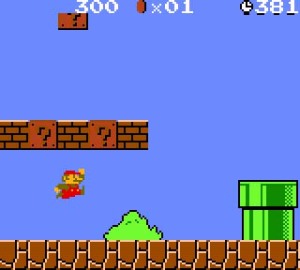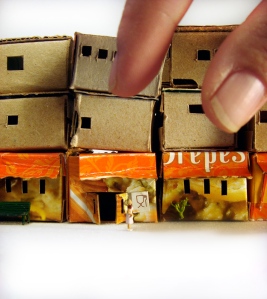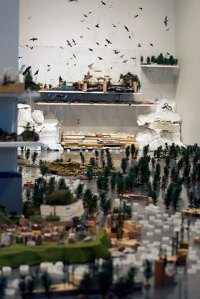I cannot resist a book sale, especially if books on art and architecture are involved and even more especially if the proceeds are for a pet cause of mine. So attention friends: if you live in or plan on visiting the Queen City September 24th or 25th, don’t miss the Art, Architecture, & Photography Used Book Sale at Hodges Taylor Gallery in Uptown Charlotte. Held by the Friends of the Library, all proceeds benefit our local libraries and new boxes will be unpacked continuously so check it out both days if you can. And tell your friends because we in the industry need the reduced prices, Great Recession or no.
For all you dance, music, theater, and film devotees, the Friends of the Library will feature a Book Sale for those areas of interest on Saturday, October 16th, so mark your calendar.
Just in case you're due for an act of all-out altruism, pick up a book or two for me. I'll miss the sale due to a long scheduled trip – horror!
Tuesday, September 14, 2010
Sunday, September 5, 2010
Man Down: Novice Gaming and Writing for Laughs

Disclaimer: I’m not a gamer. My gaming days ended with Super Mario Brothers 2. I realize that makes me a luddite amongst my peers who at least know how to play Playstation, Wii, or Xbox 360. I know how to use an Xbox as a DVD player.
So I can relate to Nicholson Baker’s recent New Yorker article, “Painkiller Deathstreak,” where he relays the frustration and absolute ridiculousness of being a video game novice. Baker is a great writer and funny, too, which means he’s a really great writer. I love breezily inserted lines like “I wish so many foreigners didn’t have to be shot, so many historical sites damaged without comment, but evidently they do,” or in explaining the portrayal of his death in one game, “the image desaturates to black-and-white and there’s a tactful moment of funereal bagpipery.” When the hero of another game finds a precious, ancient green lamp, Baker empathizes that “being an American action hero, [he] immediately breaks it like a piggy bank on the floor.”
In On Writing Well, (one of my favorite books on the craft), William Zinsser describes humor as a “special angle of vision granted to certain writers who already write good English.” Baker’s account is fantastic humor, and it’s the writing that makes it so – that delicate combination of syntax, phrasing, and wit. Humorists do serious work, as any fan of satire knows, but the presentation sets it apart from other opinion pieces as something accessible if no less controversial.
A novice’s reflections on gaming may not draw great controversy, but gamers’ tolerance to depictions of violence is one of the underlying themes of the article. E.B. White believed, “Humor is a by-product that occurs in the serious work of some and not others.” The product of disparate ideas brought together to shed light on some truth however seemingly small, humor represents the quintessential creative act.
Thursday, September 2, 2010
Model City Economics
Model cities: who doesn’t love to look at miniatures of real life places and take in the bird’s eye view of a city made comprehensible by its micro-sized rendition. Now imagine that model being made of trash – reclaimed bits of detritus modeled, sculpted, and repurposed into backyards, condo towers, or the great lights of Broadway.
Enter Max Liboiron, an artist and academic who creates “walk-in, miniature dioramas” from a city’s discards. Her most recent work, The New York City Trash Exchange, opening September 9th at the AC Institute, represents none other than the great city itself and is, yes indeed, composed of New York City trash.
Liboiron’s work is more than a fun introduction to trash activism. Issues of economy and exchange value play out in the exhibition of the small cities. In some cases, the parts of the installation are to be taken away by patrons free of charge since the visitor’s own trash might be included in the work itself.
Other installations are based on a barter economy. Visitors are free to take away a piece of the installation as long as they replace it with something of equal or greater value in return. The irony of gauging trash’s value is not lost on artist or viewer.
Enter Max Liboiron, an artist and academic who creates “walk-in, miniature dioramas” from a city’s discards. Her most recent work, The New York City Trash Exchange, opening September 9th at the AC Institute, represents none other than the great city itself and is, yes indeed, composed of New York City trash.
 |
| Max Liboiron, "The New York City Trash Exchange" (2010) |
Other installations are based on a barter economy. Visitors are free to take away a piece of the installation as long as they replace it with something of equal or greater value in return. The irony of gauging trash’s value is not lost on artist or viewer.
- Liboiron’s work also invokes the archeological, as in Material Afterlife: Circulation where she created 139 lawnscapes and 70 cars then tracked their location as they were taken away by gallery patrons. Liboiron mapped her sculptures’ movement across the continent, like so many migratory birds. For its lowly origins in the city dump, it’s hard not to see the poetry.
 |
| Max Liboiron, "The Dawson City Trash Project" (2008) |
Subscribe to:
Comments (Atom)
